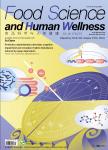A Comprehensive Framework for Decoding Salty Taste Information from EEG Signals: Distinguishing Brain Reactions to Saltiness of Comparable Intensity
作者机构:School of Life Science and Technology University of Electronic Science and Technology of China Department of Computer Science the University of Georgia School of Automation Engineering Northeast Electric Power University
出 版 物:《Food Science and Human Wellness》 (食品科学与人类健康(英文))
年 卷 期:2024年
核心收录:
学科分类:0832[工学-食品科学与工程(可授工学、农学学位)] 08[工学] 083201[工学-食品科学]
基 金:supported in part by the National Natural Science Foundation of China under Grant 31871882 in part by the National Key Research and Development Program of China under Grant 2021YFC2800403 (YF-SHJD2101-3)
摘 要:The perception of salty taste is crucial for individuals to make healthy food choices. Yet, the brain electrophysiological signals underlying salty taste perception have been poorly described. In this study, electroencephalography (EEG) was used to record brain activity induced by NaCl solution as a salty taste stimulus. A combination of a custom delivery device and stimulation paradigm was employed to preserve the salty taste signal clearly. A stimulus-response capture method was proposed that could adapt to individual differences in brain responses to salty taste and accurately segment salty taste response signals. Applying this method to the EEG processing workflow can form a complete data processing framework. The results showed that the neural response induced by salty taste reached a high activity level in the initial stage within a short period (0.2s), and there was a sustained periodic response within 0.75s after the stimulation. Moreover, the salty taste information in the EEG signal was decoded, and discrimination of two similar concentrations of salty taste solutions was achieved far above the chance level (average identification rate: 89.66%). This study demonstrated experimental paradigms and research methods for understanding salty taste perception, which could provide references for research on other basic tastes.



